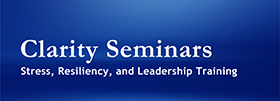The Boston Globe
November 23, 2005
By Carey Goldberg
Meditation seems to energize the sleep-deprived. It seems to help with concentration. It even seems to bolster the structure of the brain as we age.
Neuroscientists presenting their latest research at a convention of 34,000 colleagues last week had so much praise for meditation that it was starting to sound like a mantra. Their work fits into a growing body of data that tries to bring science to bear on age-old methods to quiet the mind.
Enthusiasts have long touted the health benefits of meditative practices such as chanting, yoga and prayer. Now, using the latest high-tech tools of neuroscience and biochemistry, they are teasing out how those benefits work. And increasingly, they are focusing on how meditation may help not only the body but the brain.
“As time goes on, we’re understanding this phenomenon in ever more advanced scientific terms,” said Dr. Herbert Benson, president of the Mind/Body Medical Institute and a Harvard Medical School associate professor who has studied the body’s “relaxation response” for nearly 40 years.
While some of the most striking studies have involved monks who were experts at meditation, the new research also backs up claims that less advanced meditation can bring scientifically demonstrable benefits.
Considered on the fringes of science just a generation ago, serious research on meditation now includes hundreds of studies examining its possible benefits, as demonstrated at last week’s Society for Neuroscience meeting in Washington.
In recent years, academic researchers seeking to turn anecdotes into hard data have suggested that meditation may provide a broad array of benefits, from lifting depression to relieving pain to fighting flu.
Skeptics remain. Many of the studies are small and preliminary, and some depend on the meditators’ descriptions of what they feel, which could be biased by their desire for it to work.
When the Dalai Lama, the Tibetan spiritual leader and a longtime collaborator with brain scientists, was scheduled to speak at the Society for Neuroscience conference, several hundred scientists signed a petition questioning his presence and arguing that meditation research has not been objective enough.
But researchers say that that is their very aim: to improve the quality of the research, using new tools and better methods, to determine more conclusively what meditation really does.
“If we’re going to make extraordinary claims, and claim that certain individuals can break the rules we have about human performance, the methodology has to be absolutely airtight,” said Sam Moulton, a psychology graduate student at Harvard.
As the power of meditation gained credibility during the 1970s and 1980s, Moulton noted, researchers were looking mainly for physiological effects, such as blood pressure and heart benefits. “Now we’re looking for mental effects.”
Monks are considered the superstars of meditation, but Benson and others say benefits can come from a spectrum of repetitive, mind-clearing practices that elicit the so-called relaxation response – from swaying in prayer to saying the rosary to knitting.
Among the studies presented last week was one by Massachusetts General Hospital researchers, who scanned the brains of 20 people who meditated regularly. These people had four regions of cortex – the rind of the brain, associated with higher functions like memory and decision making – that were thicker than in 15 subjects who didn’t meditate. In addition, the researchers found signs that one area of the cortex seemed to have aged less quickly than it did in nonmeditators. The study did not look at whether those brain differences had a noticeable impact on behavior, but researchers are now doing follow-up work to assess that.
In other Harvard-affiliated work, researchers reported that by using a device that can analyze every breath a person exhales, they could objectively measure the depth of relaxation a person had achieved.
People who reached deeper states of relaxation exhaled more nitric oxide, a gas known to relax the smooth muscles in arteries, and aid blood flow.
Another new study, from the University of Kentucky, found that meditation could offset the sluggishness of sleep deprivation better than a nap.
Researchers tested volunteers on a button-pressing speed task and found that even novice meditators improved their performance more after 40 minutes of meditation than after a 40-minute nap.
Buddhist monks have demonstrated that meditation can give them extraordinary powers of mind, according to work by Olivia Carter of Harvard.
Her team tested the powers of concentration of 76 Tibetan monks by showing them different images in each eye. Normally, people’s brains flip between the two images every 2.5 seconds. But the monks averaged about four seconds per eye, and one monk reported focusing on one of the images for 723 seconds.
Ultimately, scientists aim to understand not only the powers of monks but the everyday experiences of an amateur like Philip Hresko, a 63-year-old Boston architect who began training six weeks ago at the Mind/Body Medical Institute out of concern for his heart health. Along with more prolonged techniques, he said, he has been learning to relax when he gets a spare 20 to 30 seconds.
Already, Hresko said, his high blood pressure has fallen and he has more energy. And does he feel mentally and emotionally better?
“Oh, my God, yes,” he said.
© 2005 The Boston Globe

